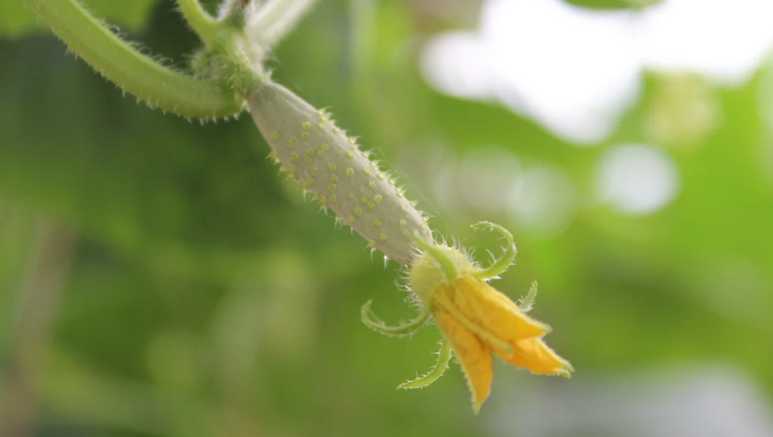If you have the fruits of cucumbers in your garden slowly and poorly grow, read the article. It describes the reasons and there are many useful tips that will help to eliminate the problem.
Contents
- The fruits of cucumbers are slowly and poorly grow and poured in a greenhouse, open ground: why, causes
- Cucumbers bloom, but do not grow: reasons
- How to feed the cucumbers so that they grow well: chemical fertilizers, biological drugs, folk remedies
- Elimination of the reasons that interfere with the growth of cucumbers
- Prevention of slow growth of cucumbers: how to prevent?
- Video: Cucumbers do not grow and ovaries turn yellow - give the cucumbers top dressing
Cucumbers - this culture is picky. They can grow poorly due to pests and for other reasons. In this article you will find out why these fruits are growing slowly and poorly. How to feed the cucumbers to grow well? Look for answers to this and other questions below. Read further.
The fruits of cucumbers are slowly and poorly grow and poured in a greenhouse, open ground: why, causes
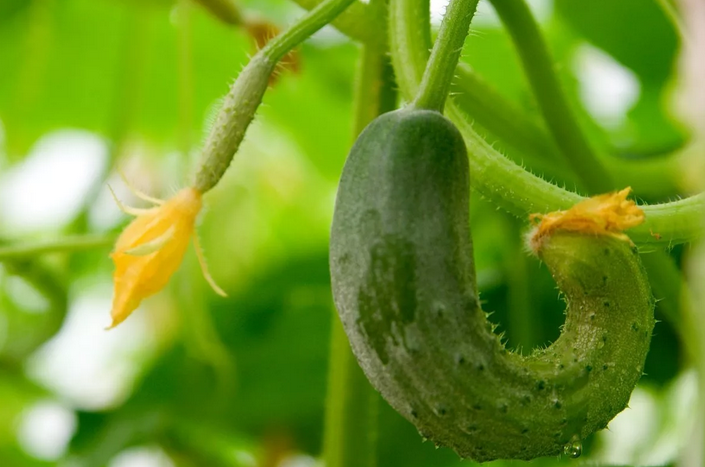
It is important to understand why the cucumbers began to grow poorly. Analyze the landing time, whether you care for the culture correctly and in what conditions it grows. The reasons why the fruits of cucumbers are slowly grow and are poorly poured in a greenhouse, there is a lot of open ground, but you can find the right solution to such a problem.
Landing of outgrown seedlings:
- You need to transplant young sprouts in open ground not older than 35 days.
- The later landing will damage the root system of cucumbers.
Early sowing seeds in open ground:
- Early planting of seeds in cold soil harms cucumbers.
- For sowing, you need to select stable sunny weather.
- Earth should be heated for a minimum 14 days.
- Optimum soil temperature for planting: plus 14-16 ° C.
- Planting sprouts in cold ground leads to their wilting.
Condensation Planting:
- If the seeds are planted closely, air exchange is broken.
- The plant will lack oxygen and lighting.
- This affects the development of diseases and the appearance of insects.
To increase the growth rate of cucumbers:
- You can use trellises.
- Optimal landing 3 sprouts per 1 m² of beds.
Not suitable soil:
- Cucumbers need organic fertilizers: manure, straw or grass.
Diseases of cucumbers:
- Plant pathologies are easier to prevent.
- Therefore, it is recommended to spray cultures with a special solution - for 5 liters of water 1 liter of milk and 25 drops of iodine.
To spray cucumbers at least 3 times per season:
- During the appearance of 1 real sheet
- 2 weeks after 1 spraying
- Before flowering
Lack of top dressing:
- Cucumbers need to be fed not only before planting plants, but throughout the growth of culture.
- You can feed bread, ash, yeast.
- Before irrigation, they need to be dissolved in water and poured plants.
- During fruiting, cucumbers require potassium and phosphorus.
- It is also not worth abuse with top dressing, otherwise they will disappear.
- It is possible to increase the dose only with symptoms of a lack of top dressing.
Rare harvest:
- The crop of cucumbers must be harvested 1 time in 2 days.
- The yield of the bush will increase if the fruits are taken into small.
- But if you collect them overgrown, new ovaries will cease to form.
These are the main reasons. Even more useful information below. Read further.
Cucumbers bloom, but do not grow: reasons
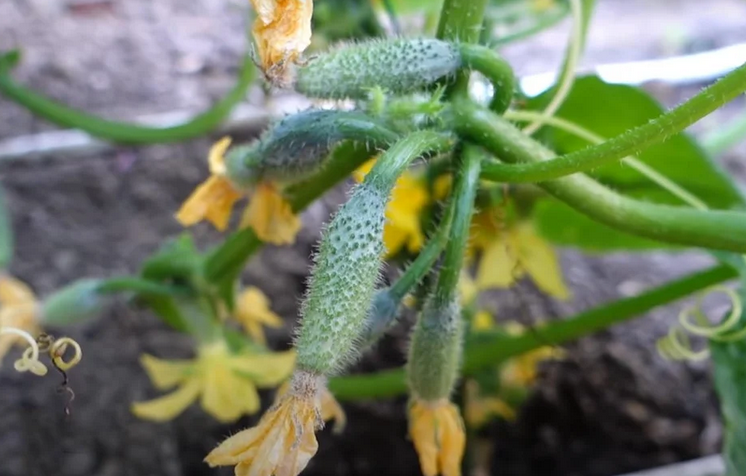
If this culture blooms, but does not bear fruit, it is a matter of pollination. It is worth planting other plants to dusty cucumbers to attract bees. It is also recommended to buy seeds age 2 to 3 years old. Young crops, more often give empty flowers, and overripe are poorly growing. Here are the reasons why cucumbers bloom, but do not grow:
Diseases:
- Diseases are a common cause of slow growth of cucumbers.
- It is worth acquiring varieties resistant to diseases: Masha, goosebumps, octupus, competitor and others.
Fungal diseases - false pulmonary dew:
- This is a common disease that reduces the number of fruits on plants in the second half of summer.
Signs:
- The formation of shapeless white or colored spots with a border on the upper part of the sheet.
- On the bottom of the sheet, a white powdery coat is formed.
- Damaged or twisted in a tube leaves.
- Premature drying and falling if the central vein is damaged.
The consequences of this disease are a violation of photosynthesis that affects the growth and development of fruits. The causes of false -core dew are cooling, watering with cold water, high humidity and soil.
Prevention:
- Choose stable hybrids
- Process the seeds
- Spray cucumbers with fungicides
- Disrust the soil
- Plant the plants at a sufficient distance from each other
Powder:
- This is a fungal disease that affects the leaves, plant fruits.
Signs:
- Plaque formation: white round spots on the sheet
- The leaves are deformed and become wavy
- The sheet plate is bent and dries up
The consequences of powdery mildew are a decrease in fruit size, dehydration of the plant and its drying. The causes of powdery mildew are hot and dry weather, poor lighting of the greenhouse and frequent rains.
Prevention
- Thorough cleaning of the greenhouse from leaves.
- Disinfection of the greenhouse.
- Weed fighting.
- The use of stable hybrids.
- Creating favorable conditions in the greenhouse: from 17 to 30 degrees room temperatures, watering with warm water from 20 to 22 degrees.
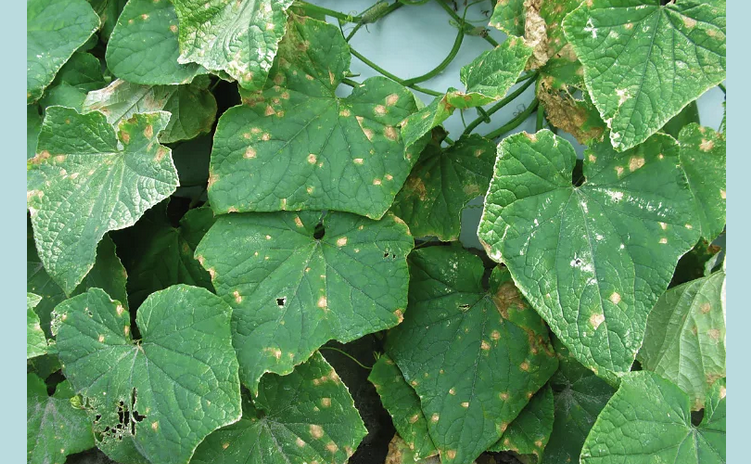
Anthracnosis or copper:
- This is a disease caused by mushrooms, leading to drying the plant.
Symptoms:
- The appearance of pale yellow spots of a rounded shape on the leaves.
- Oval or oblong spots, with increased humidity, they are covered with pink spores.
- The fruits quickly fade and become bitter.
The causes of the disease are high soil humidity, a stable high temperature from 22 to 27 degrees, constant formation of water film on the leaves and thickened plantings.
Prevention:
- Using antifungal drugs.
- Spraying solutions: burgundy liquid, copper sulfate.
- Use disinfected seeds treated with tiramam.
- Clean the greenhouse from plant residues.
Bacterial diseases:
Angular spotting:
- This is a common disease, the affecting majority of representatives of the pumpkin family, but the most harmful cucumbers.
Signs:
- Wet stains on the bottom of the sheet acquiring an angular shape due to veins.
- The formation of white, darkening crust.
- Torn leaves.
- Deformed fruits.
The reasons for the spread of angular spotting are infected seeds or seedlings. The occurrence of the disease is also facilitated by sandy soils that damage the surface of the leaves. Its favorable development is also affected by a wet climate.
Prevention:
- Moderate watering
- Compliance with crop rotation
- Spraying Hom or Energy
- The loosening of the earth
- Top dressing 2-3 times per season
Viral diseases.The most common pathologies of this type are:
Ordinary mosaic:
- Signs - a deformed sheet with yellow or white spots, a slowdown in plant growth, drying of the stem.
- The reasons - Cold climate, unprocessed seeds and non -compliance with crop rotation.
- Treatment - There are no drugs from the virus.
- For prevention, it is necessary to disinfect the seeds, feed the plant and observe the principles of crop rotation.
Green mosaic:
- Signs -yellow-brown spots on the leaves, drying of culture.
- The reasons - Unprocessed soil and seeds, an increase in temperature in the greenhouse.
- Cure This disease is impossible. Infected stems must be dug up so as not to infect other beds.
- For prevention It is necessary to disinfect the seeds and soil, carefully clean the previous plants and feed cucumbers.
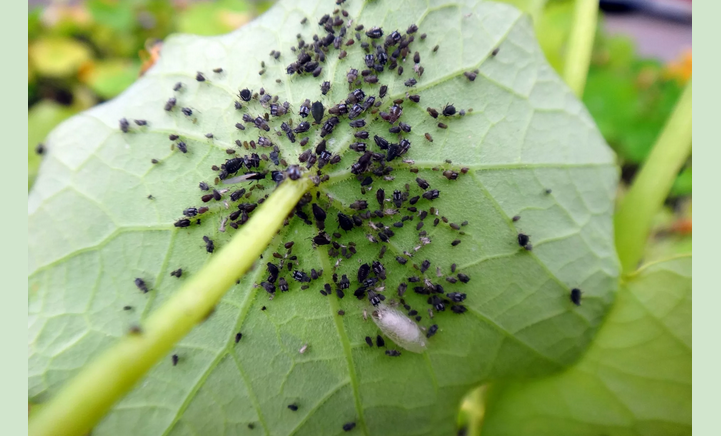
Pests are the most common:
- Aphid - This is an insect that destroys the crop, sucking juice from the plant. To combat the pest, they use: soda, vinegar, ash and onion husk.
- Spider mite - Pest damaging plants not only in open ground, but also greenhouses. It sucks the juice from the plant, completely destroying it.
- Slugs -harmless in the appearance of mollusks, due to which many diseases occur. To combat them, manual collection is effective, the drug is metalmilic and parsley planted near the beds.
- Bear - insects that destroy the stem and root of the plant. Without the root system, cucumbers begin to wander and die. To eliminate it, use traps of eggshell and beer, the drug "Medvedko-S"as well as pine branches, ate.
Lack of lighting:
- Cucumbers are photophilous plants.
- Sunlight is most necessary for this culture during the growing season.
- With its lack, the leaves turn yellow and the plant wither.
Thundered landings:
- When growing cucumbers, it is forbidden to thicken landings.
- Otherwise, the plant will lack oxygen and sunlight.
- With a vertical planting, the optimal distance between the stems - 40 cm. With a horizontal method - 60 cm.
Each such problem needs to be eliminated, otherwise the crop will die. How to do this, read on.
How to feed the cucumbers so that they grow well: chemical fertilizers, biological drugs, folk remedies
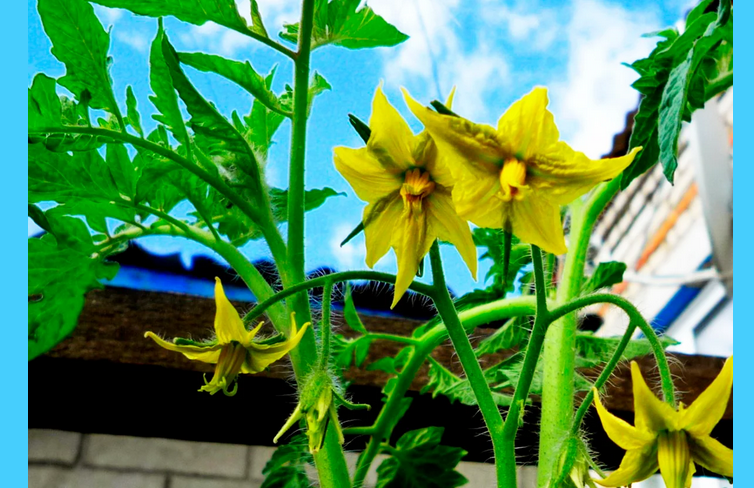
As mentioned above, cucumbers are a picky culture, for a good growth of which it is necessary to monitor the climate and quality of the soil. Therefore, top dressing is very important in growing these green fruits.
It is necessary to start feeding from the very beginning of the growth of the plant. Microelements and vitamins are necessary for the plant throughout the entire period of development - from vegetation to fruiting. But at different stages, cucumbers require different nutrition and dosage.
- At an early age (before flowering and fruiting), cucumbers need nitrogen. In a smaller amount of phosphorus and potassium.
- During fruiting, many minerals are needed, namely potassium and magnesium.
What else to feed the cucumbers to grow well? Here are some tips:
Chemical fertilizers:
- Mineral fertilizers are inorganic compounds, their composition contains mineral salts that feed plants.
- There are simple and complex fertilizers.
- Simple contain 1 element: phosphorus, potassium or nitrogen.
- The complex contains a whole complex of nutrient components. For the use of chemical fertilizers, sewers are used.
The most common mineral top dressing:
- Ammofos. It contains nitrogen and phosphorus. The substance dissolves well in the liquid and is suitable for almost any soil. It helps to increase the resistance of cucumbers to diseases and extends the fruiting period.
- Nitroammofoska. This is a universal fertilizer suitable for all crops and soil. The composition contains phosphorus, potassium and nitrogen. Increases the growth rate of cucumbers.
- Nitrofosk. Contains nitrogen, phosphorus and potassium. Sold in the form of granules that are well stored. It increases the number of ovaries and accelerates vegetative processes.
Biological drugs:
- Many gardeners use fertilizer "BB-MMS Biobak".
- It contains the nutrients necessary for the growth of the plant and increase the crop.
- They can water plants and treat seeds.
FOLK REMEDIES:
Yeast:
- These are mushrooms with a large number of proteins in the composition (up to 70%), as well as minerals and minerals.
- Cucumbers react well to this product.
- Such top dressing increase the activity of microorganisms in the soil.
- They accelerate the processing of organic substances with the release of phosphorus and nitrogen necessary for the good development of cucumbers. They stimulate plant roots.
Yeast top dressing should be combined with ash. They increase the content of calcium and potassium in the soil. But do not combine yeast top dressing with other organics, compost or humus. Cultures can be overfeed. The effectiveness of this top dressing also depends on the heating of the soil. At a temperature below 15 degrees, yeast mushrooms are not active. When they are dissolved in water, they enhance the growth of the roots.
Preparation of the solution:
- 10 g of dry yeast
- 2 tbsp. Sahara
- 1 cup of warm water
Cook the solution like this:
- Insist in a dry room before fermentation.
- After connecting with 10 liters of warm water.
- It is necessary to water cucumbers with this solution, preferably with wet soil. It accelerates the growth of culture.
- There will be enough for the season from 2 to 3 yeast top dressing.
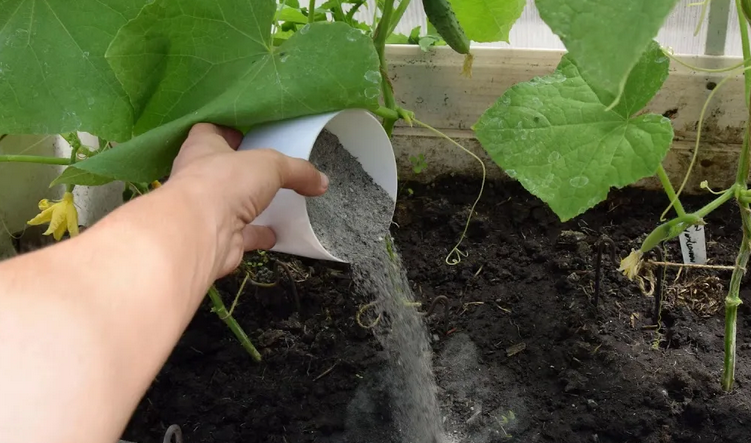
Ash:
- It is a full -fledged top dressing for cucumbers during fruiting.
- With its help, you can conduct 3-4 rechargeplants for the fruiting season.
- Zola is a safe element necessary for the development of cucumbers throughout the entire growth period.
- The slow development of cucumbers is a sign of a deficiency of vitamin substances in the soil.
- Wood ash is a complex fertilizer that contains many important elements: potassium, phosphorus, magnesium and calcium. But there is no nitrogen in the composition, it disappears during burning.
It's important to know: Nitrogen and ash fertilizers cannot be connected. This will lead to excessive ammonia formation.
Preparation of the solution:
- 2 glasses of sifted ash
- 10 liters of water
Cook the solution like this:
- Combine the ash with water and let it brew during 2 hours.
- Stiring the solution, start feeding cucumbers.
- The solution must be used after watering the plant.
Onion husk:
- Watering and pollination of cucumbers with a solution of onion husk is not only top dressing, but also protecting cucumbers from diseases.
- Such a tool has a rich composition: organic and mineral compounds.
- They nourish the plant and enrich the soil with nutrients.
- By disinfecting the plant and soil, the solution helps to get rid of diseases. It also contributes to a high harvest.
Preparation of the solution:
- 1 liter of a can of onion husk
- Hot water
Prepare top dressing like this:
- A jar of cleaning must be filled with hot water to soak the husk.
- Next, pour the solution into a pan and add 1 l water.
- Put on a slow fire.
- After the first bubbles appear in the water, boil for 5 minutes.
- Let the solution cool. Then strain and add water to it - 10 liters.
- Dilute 2 l solution in a bucket of water.
- Process the cucumbers with a sprayer or fly from a watering can.
The irrigation rate in the first weeks of planting cucumbers - 0.5 l, and a month later 1.5 l liquids. It is recommended to water in the evening. Onion husks can also be applied to the ground, when digging the beds. In the proportion 3-liter bank of husks per 1 meter of beds.
Elimination of the reasons that interfere with the growth of cucumbers

It is worth noting that there will be little top dressing alone. It is important to timely eliminate the reasons that interfere with the growth of cucumbers.
Compliance with the deadlines:
- Plant the shoots in open ground at a suitable temperature.
- Warm weather ( from +10 to +15 ° C) must be preserved at least 2 weeks.
- It is worth treating the seeds with a solution of potassium permanganate.
- So cucumbers will grow more healthy and persistent.
Correct top dressing:
- Lack of plants of plants during development, slows down their growth.
- Feed the cucumbers from 2 to 3 times per season.
- You also need to periodically inspect the plants. If they turn yellow or wither, it is worth treating the soil near the sprout with a solution of urea.
- Power feeding should be selected depending on the symptoms of nutrient deficiency.
- To increase the stability of plants, spray them with a solution of onion husk.
Timely irrigation:
- For a good growth of cucumbers, you need to observe the balance of water.
- Watering 3 times per week, and only on warm days.
- For irrigation, warm water from the container is suitable, but not a cold liquid from the hose.
- During the start of flowering, it is better to stop watering so as not to destroy the ovaries that appear.
Sugar spraying:
- During flowering, it is recommended to spray dusty plants with sugar solution 2 times per week.
- This will attract bees, which will increase the number of fruits.
Protection against diseases and insects:
- The growth of cucumbers must be monitored.
- If the leaves are covered with a white raid - this is a sign of powdery mildew.
- To cure the plant, it is necessary to spray it with a solution of skim milk and iodine.
- For prevention, it is enough to carry out this procedure 1 time per week.
If rounded spots formed on the upper sheet, and a pink plaque appeared from below - the plant is infected with anthracnosis. Damaged leaves must be removed, and the plant is treated with burgundy liquid.
Insects can also slow down the growth of cucumbers. The most common pest is aphid. To destroy it, it is necessary to spray the plant with specially prepared infusions, for example, from garlic, soda, vinegar, ammonia, etc.
Read on our website an article on how can you process cucumbers from aphids. In it you will find a lot of useful information and recipes for the preparation of solutions.
Prevention of slow growth of cucumbers: how to prevent?
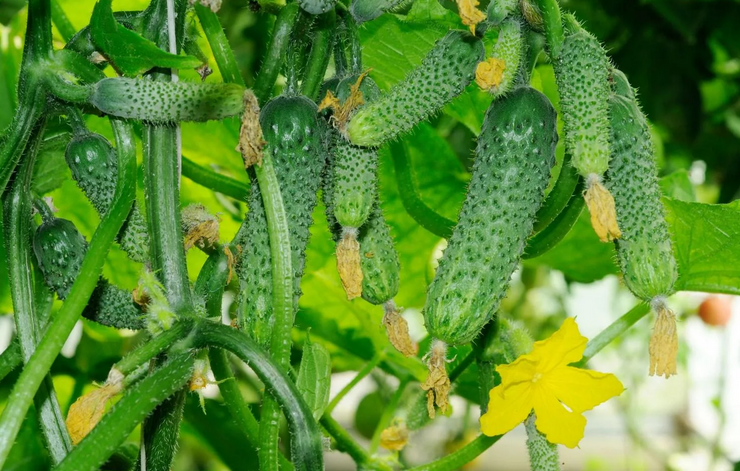
In order for the crop of cucumbers to be good and rich, it is necessary to engage in the prevention of slow growth of fruits. How to prevent poor in the vegetable growth? Here are a few useful tips:
- Each 2 years It is necessary to update the soil. It accumulates bacteria and viruses.
- Plant the sprouts of cucumbers aged no later than 35 days. Otherwise, the root system will be damaged, which will lead to the wilting of the plant.
- Follow the distance from 40 to 60 cm between the bushes.
- Do not miss watering. It is necessary to irrigate plants 3 times a week small doses on warm days.
- Buy high -quality seeds from reliable sellers.
- Before sowing, they should also be treated with a solution of potassium permanganate. Lower the seeds for 20-30 minutes in 1% Potassium permanganate concentrate. This solution protects cucumbers from diseases.
If you do everything right and carry out prevention, then the crop of cucumbers will be excellent. Water and feed plants in a timely manner, protect from pests. As a result, you will collect several hundred kilograms of these green fruits. Good luck!

